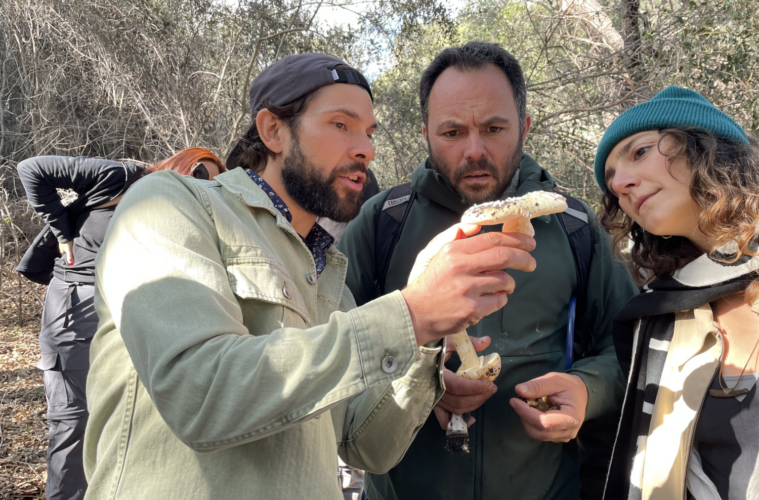Armed with a treasure map, a Troop of mushroom lovers ventured out into the Santa Monica Mountains recently in between atmospheric rivers in search of Elfin Saddle, Golden Milk Caps, Russula, the Western Jack O’Lantern, Springtime Amanita, False Turkey Tail Mushrooms and the elusive California Golden Chanterelle. We even came across the rare Unicorn Dance Mushroom.
Led by mycologist and Topanga Canyon native Brando Farr, much of it was a lesson on what NOT to eat. Our trek in the mountains along flowing streams began with a fungal tutorial.
“The Santa Monica Mountains are actually home to a lot more wild mushrooms than people realize,” Farr told the group of novice and expert foragers alike. “It’s not quite caught on as much in this culture as it has in Northern California, the Pacific Northwest or Europe. They do exist, and it’s my job to bring you all a little bit deeper into that world.
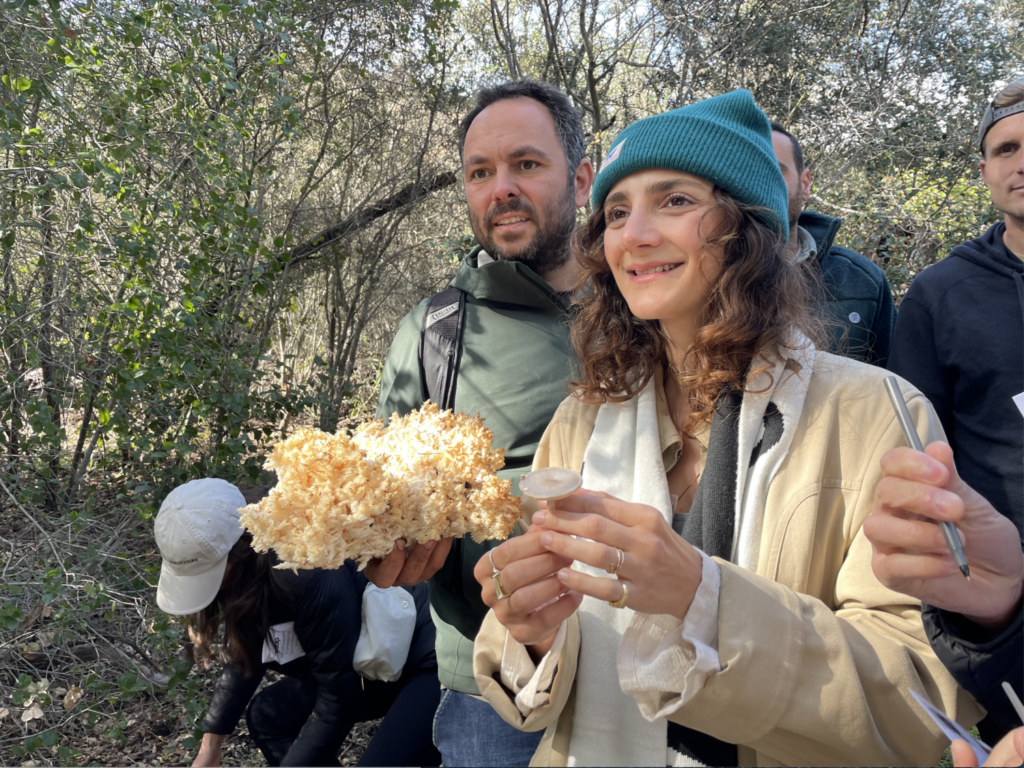
Foraging mushrooms in the Santa Monica Mountains (Michele Stueven)
“The native coast live oak is the tree that most of the mushrooms have evolved to pair with over time for the last few hundred years. Mushrooms have three major roles in which they get food and how they perform in ecology. It gets broken down into three categories.
“The first is mycorrhizal, which includes porcini, chanterelle, trumpets, and lobster which are big in fancy restaurants. They’re very special in that they are stewards of the forest. Their first and foremost job on the planet is to take care of the trees and plants. They are here pulling nutrients and water to the roots of the trees helping them to absorb. They do this through the larger organ of the mushroom, the mycelium. The mycelium is the vast network underground which is the actual organism. The mushrooms themselves are really just the flower.
“The second one is a straightforward parasite. Parasites evolve and find a way to get what they need to survive and they do that by finding a host that has been stressed out or has a compromised immune system. Cordyceps are an example.
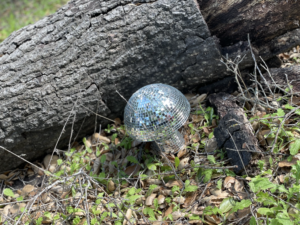
Special find: the rare unicorn dance mushroom (Michele Stueven)
“If we’re not getting the rain that soaks the soil, then the mycelium of the mushrooms isn’t able to support the trees and they grow weak and susceptible to beetles and oak death. They fall over and die and we’re starting to see more medicinal mushrooms like the turkey tail and lion’s mane pop up because of it. Almost every medicinal mushroom starts off as a parasite.
“The third is the saprophytic decomposer, which breaks down tree stumps and wood debris, turning it back into earth. With those three roles, we have an amazing blueprint that fungi and mushrooms show us that they have learned to create food out of very little and become extremely nourishing to animals and humans. They’re a great role model for us to hone in on and learn more from.”
After a successful scavenger hunt, we headed back to basecamp for a meal of Farr’s pre-foraged, sauteed California golden chanterelles with onions and thyme, mushroom broth and Cordyceps-infused mezcal. We could just feel our blood pressure coming down, our immune systems getting boosted and a surge of antioxidants. And as I live to tell the tale, it was not The Last of Us.
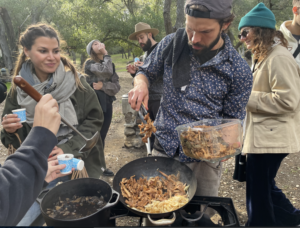
Mushroom broth and sautéed California golden chanterelles at basecamp (Michele Stueven)
With the help of event organizer Stephanie Moyal, who co-founded the Agoura-based Troop mushroom supplement startup with Jake Mellman, chef Farr shared his recipe for mushroom broth with us:
Mushroom Broth
1 gallon of water (more or less could be used, depending on how concentrated or rich of a flavor is desired)
All the mushrooms I used were dried in advance (except for the fresh crimini mushrooms I bought from market) and broken down by hand, creating small nickel-sized pieces of each. This is done to create nice bite-size pieces of the morsels, as well as two to get a more thorough nutritive infusion of the mushrooms in the broth.
1/4 c lobster mushrooms
1/2 c morels
1/4 black trumpet
1/2 c porcini
2 c dried shiitake + stems
2 c dried crimini
2-3 cups fresh crimini, boiled and evaporated 2-3x (creating the Maillard effect) get the mushrooms crispy each time when you evaporate about a half inch of the boiling water in the pan/wok, which creates a nice crust and gets stuck to the pan each time… Each time, you will deglaze this crust with water and evaporate again… This is done 2-3 x. Finish the mushrooms off by making them nice and crispy and then add them to the soup. What this does is build a big flavor bomb.
Salt to taste
Love (the most important ingredient)
Video by @glodegoodvibes
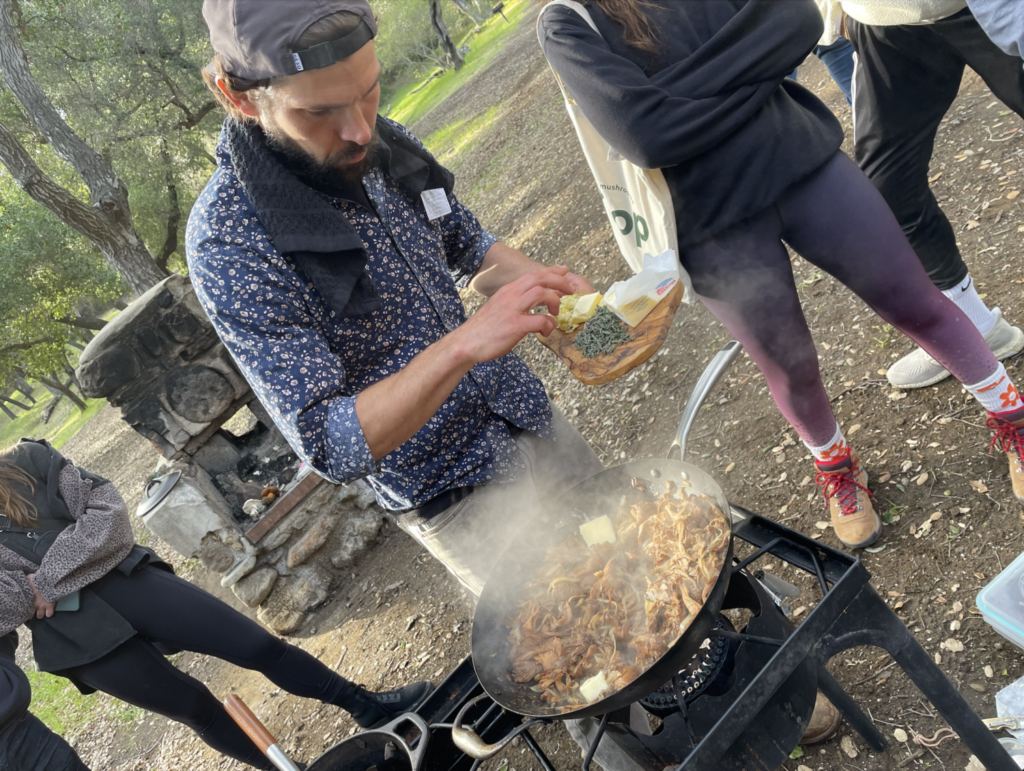
Mushroom feast in the forest (Michele Stueven)

Pixie dust (Michele Stueven)
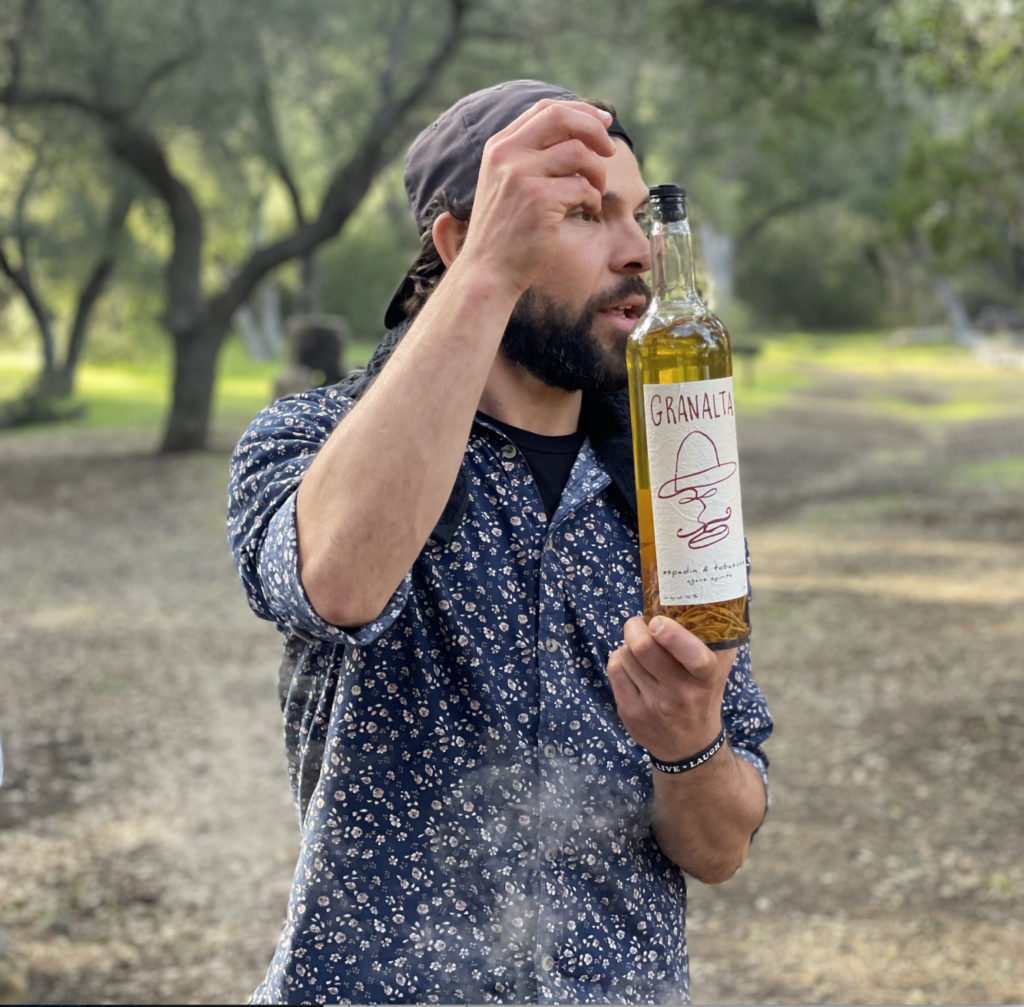
Cordyceps-infused mezcal was not The Last of Us. (Michele Stueven)
Advertising disclosure: We may receive compensation for some of the links in our stories. Thank you for supporting LA Weekly and our advertisers.

